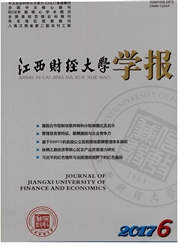

 中文摘要:
中文摘要:
通过构建基于面板数据的方向性距离函数模型,对江西省11个地级市2001-2014年工业环境技术效率进行了测度,在此基础上探讨了各区域工业生产与环境协调性的动态演变。结论如下:(1)2001-2014年江西省11个地级市工业环境技术效率整体上呈现出“N”型的波动性趋势走向,整体状况并不理想,部分地区的工业发展以牺牲环境为代价,不具有可持续性。(2)南昌、上饶和九江在各个转型期的技术效率都在不断地进步,景德镇、新余、赣州和宜春的排名不断下降,整个研究期内达到生产前沿面上的最佳实践地区较少。(3)整体上看,工业与环境的协调性发展不断优化演变,赣北地区优于赣南地区,尤其“十二五”以来,环境技术效率整体上改善明显,效果显著。江西省整体仍需优化能源消费结构和工业布局,积极促进产业升级,推进各区域经济与环境的共同协调发展。
 英文摘要:
英文摘要:
By constructing a directional distance function model based on the panel data, this pa- per carries out a measurement of the industrial environmental technological efficiencies of 11 prefecture-level cities in Jiangxi Province between 2001-2014, then on this basis, it discusses the dynamic evolution of regional industrial production and environmental coordination. The results show that: (1) on the whole, the industrial environmental technical efficiencies of these 11 cities present a "N" type volatility trend during these years, which is far from satisfaction, the industrial developments in some areas are unsustainable because of the cost of sacrificing environment; (2) the technical efficien- cy in Nanchang, Shangrao and Jiujiang is in constant progress during each transition period, the rankings of Jingdezhen, Xinyu, Ganzhou and Yichun continue to decline, with less regions reaching the best practice area on the production frontier during the whole research period; (3) as a whole, the coordinated development between industry and environment is continuously optimizing and upgrading, the northern part of Jiangxi is better than the southern part of Jiangxi, especially since the 12th Five-Year Plan, the efficiency of environmental technology has been greatly promoted with significant achievements. Jiangxi province as a whole still need to optimize its energy consumption structure and industrial layout, promote actively its industrial upgrading, and carry forward the coordinated development between the regional economy and the environment.
 同期刊论文项目
同期刊论文项目
 同项目期刊论文
同项目期刊论文
 期刊信息
期刊信息
